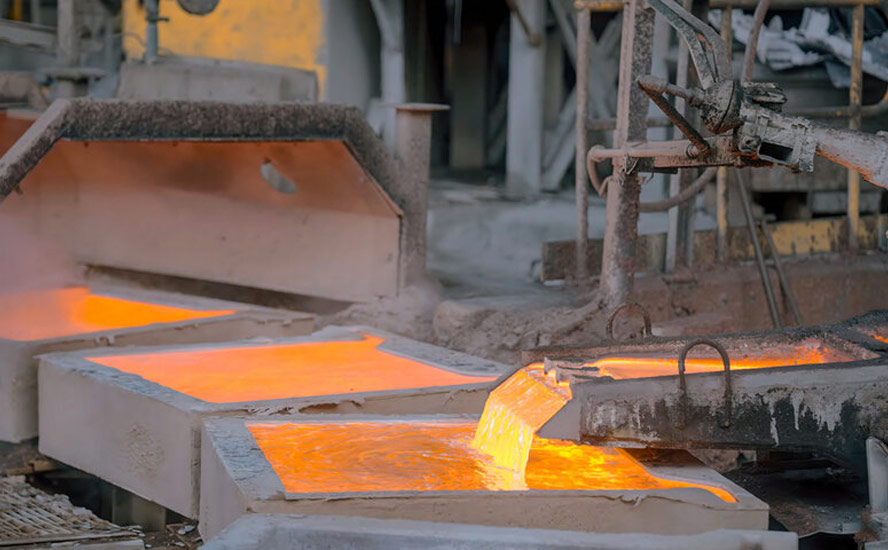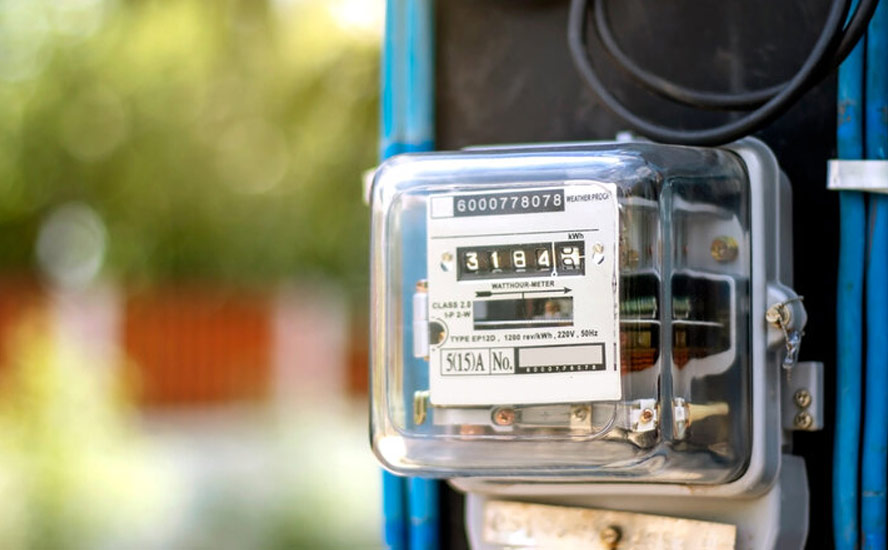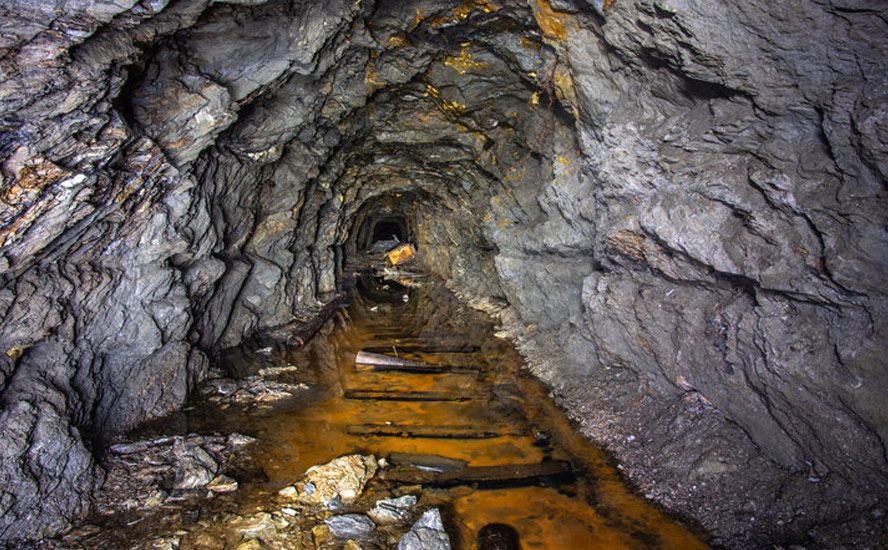NV Gold doubles down on silver with new Arizona project

2020.01.14
Arizona may be famous for its gems, but it was silver that put the southwestern state on the mining map.
Most visitors who flock to jewelry stores in Scottsdale and Sedona, searching for vibrantly-colored stones like turquoise and malachite, are likely unaware of the fact that over a century ago, in 1912, the newly christened state boasted 445 active mines, 72 concentrating facilities, and 11 smelter with a gross value of $67 million – or close to five times that, in today’s dollars.
Although more copper, in value terms, than silver is currently pulled from Arizona’s dusty soils (silver comes second followed by molybdenum and lead), the white metal figured prominently in the early days of Arizona mining. According to the Arizona Geological Survey,
Antonio de Espejo made the first major silver discovery south of the San Francisco Peaks in May 1583, near what some believe is present-day Jerome, Arizona. By the late 17th Century, Spanish prospectors had engaged in extensive mining in the mountains bordering the Santa Cruz River and its tributary Sonoita Creek. Rare discoveries of sheets or “planchas” of silver – one sheet reportedly weighed 2,700 pounds – fired the imaginations of several generations of miners…
By the 1870’s a plethora of hardrock mines were yielding prodigious volumes of copper, lead, zinc, silver and gold ore.
It’s interesting to note, as the Arizona Daily Star does in this 2016 article, that silver was heavily mined as a result of the congressionally sanctioned Bland-Allison Act of 1878. The act stipulated that the US Treasury purchase a monthly minimum of $2 million worth of silver, for minting silver dollars for circulation.
The Tucson-serving publication notes that the first silver production included 18th-centry Spanish workings in the Santa Rita, Patagonia and Cerro Colorado mountains. A number of silver mines were set up in the Tombstone Hills, where deposits of argentiferous lead, silver chloride and silver-bearing manganese sat atop a 2-mile-wide mineralized belt that extended 30 miles from the Huachuca to the Dragoon mountains.
Silver was also found in Pinal County, the Old Dominion Mine, the Silver Butte Mine near Payson, and the high-grade Silver King Mine north of Superior, which produced $6.5 million worth of silver between 1875 and 1928.
Arizona’s heady days of silver mining came to an end in 1893 when the US government demonetized silver; according to the Arizona Daily Star, these early miners moved on to prospecting for gold, or working in the growing number of copper mines in southern Arizona that responded to the need for copper wire, an affordable and effective conductor of electricity, then a new invention.
Today most of Arizona’s silver is mined as a by-product of copper. Alaska continues to be the leading silver-producing state, followed by Nevada, states the US Geological Survey’s latest data. Arizona is fifth.
Silver bulls
While gold outperformed silver last year, rising 18% to silver’s 13%, some market observers are picking silver to be the precious metal to beat in 2020.
It’s estimated around 60% of silver demand comes from industrial uses like solar panels, electronics, the automotive industry and photographic applications. The other 40% is for investing. The metal is strong, malleable and conducts heat and electricity better than any other material. Gold also has these properties but it is too expensive to use.
The solar power industry currently accounts for 13% of silver’s industrial demand. A recent study by the University of Kent found that rising demand for solar panels is driving up silver prices.
As demand for silver in its various forms powers higher, finding enough metal is becoming a challenge. 2018’s silver supply of 1.004.3 billion ounces failed to meet physical demand of 1.033 billion ounces, leaving a 29.2Moz deficit.
Silver production fell by 2% to 855.7Moz, the third consecutive drop after 13 years of uninterrupted supply growth. The 2019 World Silver Survey attributed the loss to falling production at lead and zinc mines; 75% of silver is mined as a by-product, mostly of gold, copper, lead and zinc.

As for 2019, mine supply from the top three silver-producing countries, Peru, Chile and Mexico, all dropped in the first half of last year. Data collected from each country showed Peru’s H1 silver production was down 10%, Chile’s fell 7% and Mexico’s saw a 4% decrease from January to May.
With demand outstripping supply, silver is poised to do well this year. That, along with continued dovish monetary policies at central banks (including low interest rates), and the fact that silver is currently far undervalued compared to gold – at 86 ounces of silver to one ounce of gold (86:1). A ratio above 60 typically represents undervalued silver, while a ratio below 20 demonstrates undervalued gold.
With the gold-silver ratio out of whack, either gold must go down in value, or silver must go up. With all that’s going on in the world, I don’t expect the gold price to drop, but I do expect silver to gain, and move back towards the historical average gold-silver ratio of 56:1.
For more on the silver market read Hi-yo Silver Away!
NV Gold (TSX-V:NVX)
In line with this thinking, we are pleased to see that one of our top picks in the gold space, NV Gold (TSX-V:NVX) just announced the acquisition of a very promising silver project in Arizona. NVX also posted the results of its summer drill program at Slumber in late 2019, one of its Nevada gold plays, and while the “retail” market didn’t pay much attention, we understand that NVX’s respected technical team believe the results to be quite positive, and sets the Company up for a secondary follow-up next phase and larger drill program this spring.
Silver District
Under a binding letter of intent (LOI) it signed with Magellan Gold, NV Gold has four months in which to conduct due diligence on Magellan’s Silver District property, located in La Paz County, Arizona.
The option agreement will cost NVX an initial $25,000, followed by a series of very low cash and share payments and minimal exploration commitments staged over five years to earn 100%. A rough calculation shows NVX is paying less than US$0.05 per ounce of historical silver ounces, when silver is trading at +US$18.00. If silver does have its year in 2020, this is a good entry point to acquire such a project by NVX.

First among the property’s bullet points is a historical resource of +15 million silver ounces; developed nearly 30 years ago, and virtually unexplored since, the District is thought to be open along strike and at depth, in multiple vein systems. Previous exploration saw limited drilling below 40 meters depth.
Another advantage of the project is it can be accessed and explored year-round. A third checkmark is the fact that it is close to NV Gold’s other projects it is working in Nevada, including Slumber, Root Spring and Frazier Dome.
Here’s President Peter Ball, on the company’s reasons for liking the transaction, and plans for Silver District going forward:
“After securing positive terms for NV Gold to acquire the Silver District Project, including minimal cash and dilution components, we look forward to an in-depth review of the project during the four-month exclusive due diligence period. Our goal is to push forward to finalize a Definitive Agreement with Magellan, and quickly engage a third-party, independent technical consultant, to provide geological modelling and data verification.”
Comprising 2,000 acres (809 hectares), Silver District hosts 108 unpatented mining claims, three patented claims and one state lease. According to the Jan. 13 news release, between 1883 and 1893, a number of small mines produced 1.56 million ounces of silver and 2.33Moz of lead.
Between 1973 and 1992, New Jersey Zinc Company and Orbex Minerals, plus a number of other companies, drilled 465 shallow holes (under 40m or 130 ft), conducted metallurgical test work and carried out historical scoping studies.
A resource compiled in 1992 showed 3.56 million tons grading 4.46 ounces per ton silver (138.7 grams per tonne) – with contained ounces of 15.9Moz – and 2.3 million tons of fluorspar grading 14.5%, yielding 328,450 tons of fluorite. There were also “substantial tonnages” grading 17.09% barite and 3.57% lead-zinc, according to NV Gold, which has not confirmed the figures.
The three principal epithermal vein systems extend over an 8-mile (12.8-km) strike length, with the silver, lead-zinc, fluorspar and barite mineralization occurring along pod-like bodies between 15 and 50 feet wide and hundreds of feet long.
While almost no exploration has been done for three decades, a 2014 hole drilled by Magellan cut 90 feet grading 6.05 oz/t silver (188.1 g/t), including 10 feet of 17.06 oz/t (530.6 g/t!)
Nobody at NV Gold is talking yet about mine plans, but the press release states Conceptual development plans by past operators have involved multiple open pits feeding a central mill. Flow sheet designs employ fine grinding and cyanide leaching to recover silver, and conventional flotation to recover fluorspar and barite.
In conversation with AOTH, Peter Ball said “the costs of a drill program to test the shallow (300 to 500 feet deep) targets, and potentially add ounces, could be on the low side, and that’s good news for shareholders. NVX will not be burning, or issuing, significant capital or shares, as it earns in and explores the project. Our goal is to always manage dilution and we were able to get excellent terms to get 100% of the project, and also staged over 5 years.
Ball also said “the project is interesting as it may yield significant upside in the historical resource down-dip or along strike,” and contends that the surface high-grade material needs to be checked at depth. “We will evaluate these mineralized enrichment zones of silver (and base metals), and see what exists below the known zones to potentially add some additional ounces, noting the majority of the drilling never went below 40m at depth.”
Slumber
NV Gold’s Slumber property runs through the Bilk Creek Mountains and continues north into Oregon. These deposits, along with the Sleeper, Sulphur-Hycroft, Goldbanks, Blue Mountain, Sandman, and other precious metals deposits located along fault-fracture zones of the Northern Nevada Rift, define an important epithermal province in northwestern Nevada.
The target is volcanic-rock-hosted epithermal gold and silver mineralization. The hope is to find a bonanza-type vein gold deposit. Epithermal veins can stretch hundreds of meters deep and are usually narrow and high-grade. In conjunction with these veins, are large alteration “haloes” of mineralization made by circulating hydrothermal fluids.
While usually high-grade and close to surface, epithermal gold deposits are generally low tonnage, unlike Nevada’s three northwest trending belts: the Carlin, Cortez and Walker Lane trends, which are three of the world’s top mining districts.
NV Gold picked up Slumber at the end of May through a letter of intent with the vendors.
The property has “close-ology” in its favor. It’s approximately 21 miles west of the Sleeper bonanza epithermal vein gold deposit. The Sleeper mine (operated by Amax Gold) produced 1.6 million ounces of gold and 2.3Moz of silver, between 1986 and 1996.
Seeing the potential for a drill program, NV Gold set about gravity and ground magnetics to assess structure and alteration that is obscured by widespread alluvial cover up to 100 meters thick.
The upshot of those surveys was the discovery of a large, hidden gold structure that was the target of NV Gold’s first drill program of 2019. The one-month, 1,091m reverse circulation (RC) drill program completed in September; assay results were published on Oct. 28.
According to the news release, four of seven holes hit mineralization, opening up the possibility of a promising gold system. However, the fact that the results turned out to be relatively low grade, meant the market didn’t react.
However, what needs to be understood is that these holes were drilled “blind” ie. the targets were buried under a thick blanket of gravel. One of the holes, SL-02, cut significantly long intercepts of 27.4m and 39.6m. The latter included a higher-grade 0.45 g/t gold and 1.6 g/t silver, for 22.8m beginning at 53.4m downhole – which could be indicative of mineralization at depth. Hole SL-01’s best intercept was 6.1m grading 0.20 g/t Au and 1.7 g/t Ag.
“NV Gold believes these results demonstrate Slumber hosts a highly prospective gold system that is potentially being fed by deeper structures within the area. Therefore, further drilling is planned after data interpretation, modelling and refinement or vectoring of drill targeting,” the company states.
The results were good enough to excite NV Gold’s technical trio of geologists, including director Quinton Hennigh, who states “Anomalous mineralization encountered over significant lengths in holes SL-02 and SL-01, some 450 meters apart, suggests the presence of a large gold-bearing hydrothermal system in the sub-surface. Its characteristics exhibit similarities to several other high-grade mid-Miocene gold systems in the region. The Company plans further data review and more refined geophysical interpretation, to target potential high-grade structures that have given rise to the anomalous plume we have encountered in the recent drilling.”
Ball told AOTH the company compares Slumber to the Sleeper model, wherein it took many holes to find the heat source lurking beneath 90 feet of alluvial cover.
According to a 1991 book on the deposit, over 90% of the hydrothermally altered and mineralized rocks associated with the deposit were not exposed at surface.
From June 1982 to July 1984, Amax Exploration punched in 41 reverse-circulation and two core holes, throughout four campaigns. By the end of 1983, 27 holes had delineated a small zone of potentially economic grade (2.6 million tons averaging 0.03 oz Au/ton and 0.79 oz Ag/ton), leading to the high-grade discovery hole which contained a whopping 0.81 ounces per ton over 335 feet, including 15 ft averaging 11.49 oz Au/ton and 5 ft averaging 25.77 oz Au/ton.
“We believe that this project deserves a larger drill program to find the root of the hydrothermal system,” Ball said. “With these initial long intersections, we believe that there may be the gold source close below. We didn’t know where it was because we were drilling blind in 2019, we’re not drilling blind a second time in the Spring of 2020.”

Conclusion
NV Gold is currently in the very interesting position of having two active, very prospective precious metals projects on the go – Silver District and Slumber. The company’s plan is to spend the next four months conducting a thorough review of Silver District (the technical team has already framed a geological model, to be tested with geophysics) as it simultaneously prepares for a spring drill program at Slumber, likely starting in April or May, or as soon as the snow melts.
And we can’t forget, NVX has two extensive geological databases, which serve as an information bank for identifying prospective, drill-worthy projects.
Compiled in the 1970s and 80s, the databases facilitate a “Nevada 2.0” thinking about the multiple layers of opportunity that remain buried in Nevada. The goal is to systematically evaluate and execute focused exploration programs with two to three drill programs per year.
Ball said his team will be looking over the next few months to extract more projects from the databases, noting that “four to five pages of interesting opportunities/ land positions have been put together over the winter.”
As I’ve said before, I like NV Gold’s “drill to thrill” strategy – they are focused on drilling the best targets, on each project, one after the other…bang bang bang.
We like the fact that NV Gold is being smart with how it sinks exploration dollars into the ground, by hitting the best targets with drill holes that will, at the very least, act as a kind of sniff test for going further. And might perhaps lead to a major discovery hole.
We’re delighted to have a well-run gold and silver junior, with strong management ownership (Chairman J. Watson largest, President P. Ball fourth largest), conscious of share dilution and their treasury, with three excellent geos who clearly know what they’re doing. (For more on the team read NV Gold identifies large, structural target for August drilling)
We look forward to seeing what NV Gold comes up with at Slumber in the spring, and the outcome of their due diligence on the Silver District – what looks to be an extremely interesting silver property being introduced at the perfect time in the silver market. It’s certainly an attractive proposition to have it in our portfolio.
NV Gold Corp
TSX.V:NVX, US:NVGLF
Cdn$0.115 2020.01.14
Shares Outstanding 46,419,217m
Market cap Cdn$5,338,209m
NVX website
Richard (Rick) Mills
subscribe to my free newsletter
aheadoftheherd.com
Ahead of the Herd Twitter
Legal Notice / Disclaimer
Ahead of the Herd newsletter, aheadoftheherd.com, hereafter known as AOTH.
Please read the entire Disclaimer carefully before you use this website or read the newsletter. If you do not agree to all the AOTH/Richard Mills Disclaimer, do not access/read this website/newsletter/article, or any of its pages. By reading/using this AOTH/Richard Mills website/newsletter/article, and whether or not you actually read this Disclaimer, you are deemed to have accepted it.
Any AOTH/Richard Mills document is not, and should not be, construed as an offer to sell or the solicitation of an offer to purchase or subscribe for any investment.
AOTH/Richard Mills has based this document on information obtained from sources he believes to be reliable but which has not been independently verified. AOTH/Richard Mills makes no guarantee, representation or warranty and accepts no responsibility or liability as to its accuracy or completeness. Expressions of opinion are those of AOTH/Richard Mills only and are subject to change without notice. AOTH/Richard Mills assumes no warranty, liability or guarantee for the current relevance, correctness or completeness of any information provided within this Report and will not be held liable for the consequence of reliance upon any opinion or statement contained herein or any omission. Furthermore, AOTH/Richard Mills assumes no liability for any direct or indirect loss or damage or, in particular, for lost profit, which you may incur as a result of the use and existence of the information provided within this AOTH/Richard Mills Report.
AOTH/Richard Mills is not a registered broker/financial advisor and does not hold any licenses. These are solely personal thoughts and opinions about finance and/or investments – no information posted on this site is to be considered investment advice or a recommendation to do anything involving finance or money aside from performing your own due diligence and consulting with your personal registered broker/financial advisor. You agree that by reading AOTH/Richard Mills articles, you are acting at your OWN RISK. In no event should AOTH/Richard Mills liable for any direct or indirect trading losses caused by any information contained in AOTH/Richard Mills articles. Information in AOTH/Richard Mills articles is not an offer to sell or a solicitation of an offer to buy any security. AOTH/Richard Mills is not suggesting the transacting of any financial instruments but does suggest consulting your own registered broker/financial advisor with regards to any such transactions
Richard owns shares of NV Gold (TSX.V:NVX). NVX is an advertiser on his site aheadoftheherd.com
Legal Notice / Disclaimer
Ahead of the Herd newsletter, aheadoftheherd.com, hereafter known as AOTH.Please read the entire Disclaimer carefully before you use this website or read the newsletter. If you do not agree to all the AOTH/Richard Mills Disclaimer, do not access/read this website/newsletter/article, or any of its pages. By reading/using this AOTH/Richard Mills website/newsletter/article, and whether you actually read this Disclaimer, you are deemed to have accepted it.


























